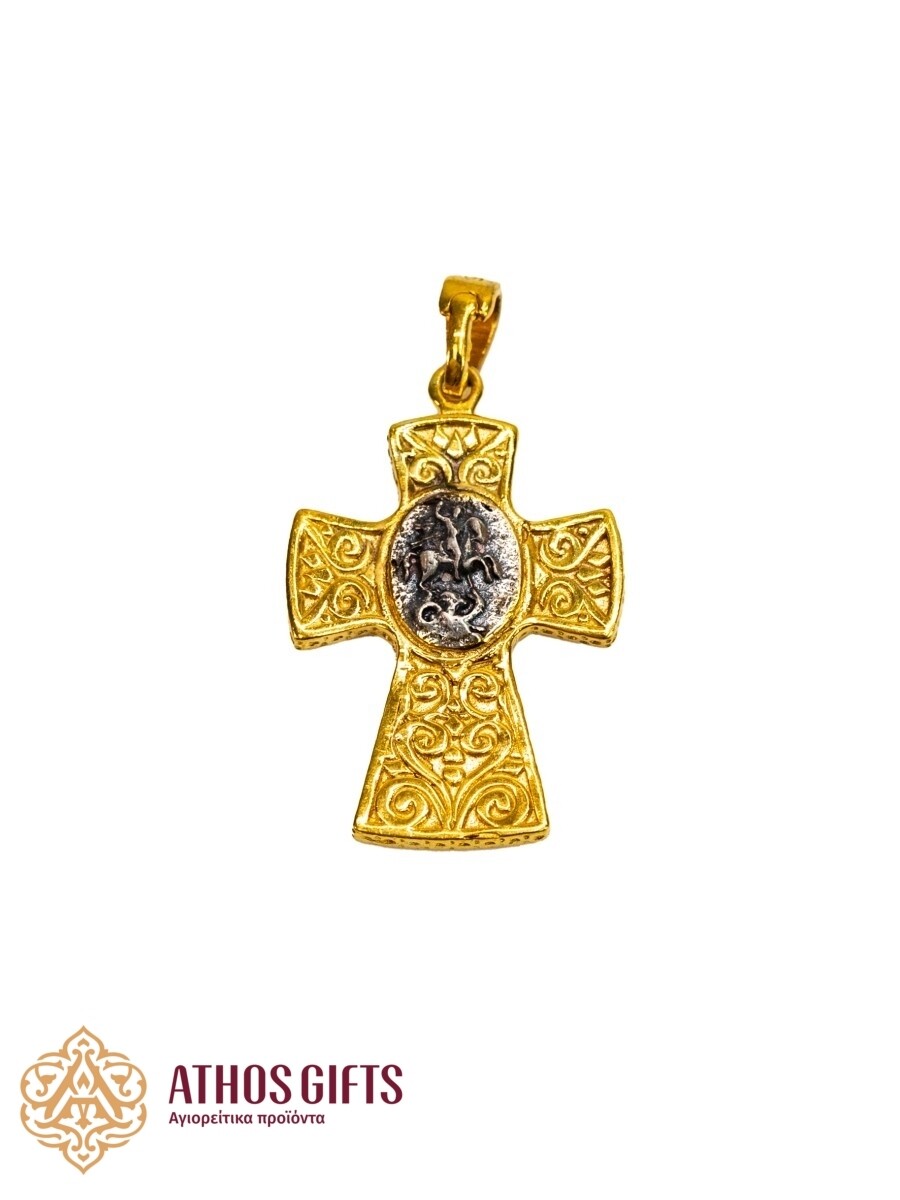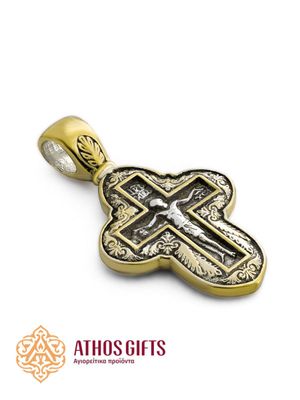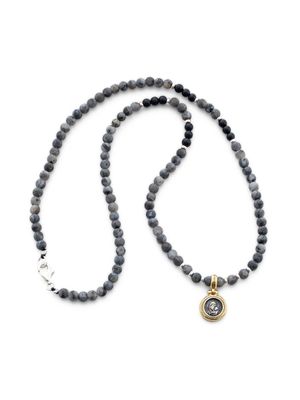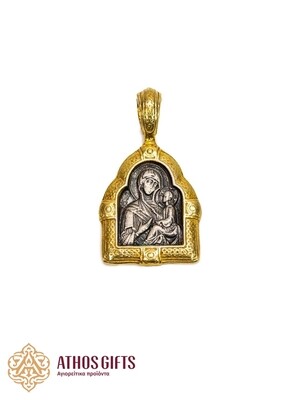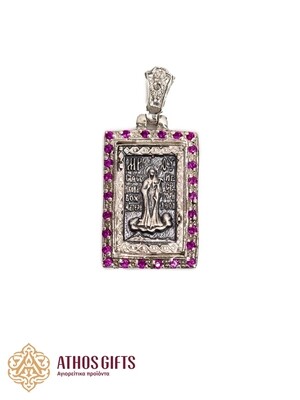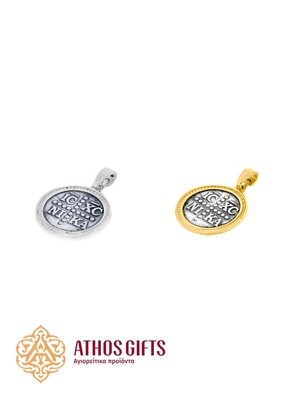Sterling silver cross with icon
The front side of the cross depicts the crucifixion of our Lord Jesus Christ. On the reverse side there is a small oval icon of Saint George, Saint Panteleimon, Saint Paisios, or Saint Michael the Archangel. The cross is made of sterling silver with gilded edges.
Orthodox cross: history and symbolism
The Orthodox Church honors the Cross as a great relic symbolizing the redemption of the human race. The honorable Cross of the Lord for the Christian faith is the highest symbol of sacrifice and sanctification, and therefore its significance is truly invaluable. The Cross and the Resurrection are the two main axes of Christianity: the Resurrection follows the Cross and implies the Cross, and the Cross predicts the Resurrection.
Before Christ was crucified for our sins, anyone who died through crucifixion was considered damned. After Jesus died on the cross, it became a symbol of redemption. From an instrument of death the cross became an eternal source of life, from a horrible instrument of execution it turned into a light and blessed sign.
This paradox and great change came about because immeasurable divine love and mercy did not avenge human ignorance and evil. The all-redeeming divine love leaves no room for hatred, anger, and malice. God as absolute love, instead of vengeance, had mercy on mankind, giving redemption from the bitter bonds of sin and evil, giving mankind eternal life. After the crucifixion, the cross became associated with the Lord Jesus Christ, drawing from Him its invincible power, sanctification and grace. That is why the worship of Christians to the Cross is not idolatry; it is the worship of Christ Himself. Christians proudly wear the cross in memory of the great atoning sacrifice and as an effective bulwark against evil.
The honorable Cross of the Lord is the unifying force of mankind. The two crossbars of the Cross symbolize the union of men with God (the vertical crossbar) and the union of men with one another (the horizontal crossbar). The last one also symbolizes the two arms of the Crucified Savior, which are open to embrace all mankind.
Characteristics
Dimensions: 3x2 cm
Width: 2 mm
Weight: ~6 gr
Material: sterling silver, gilding
